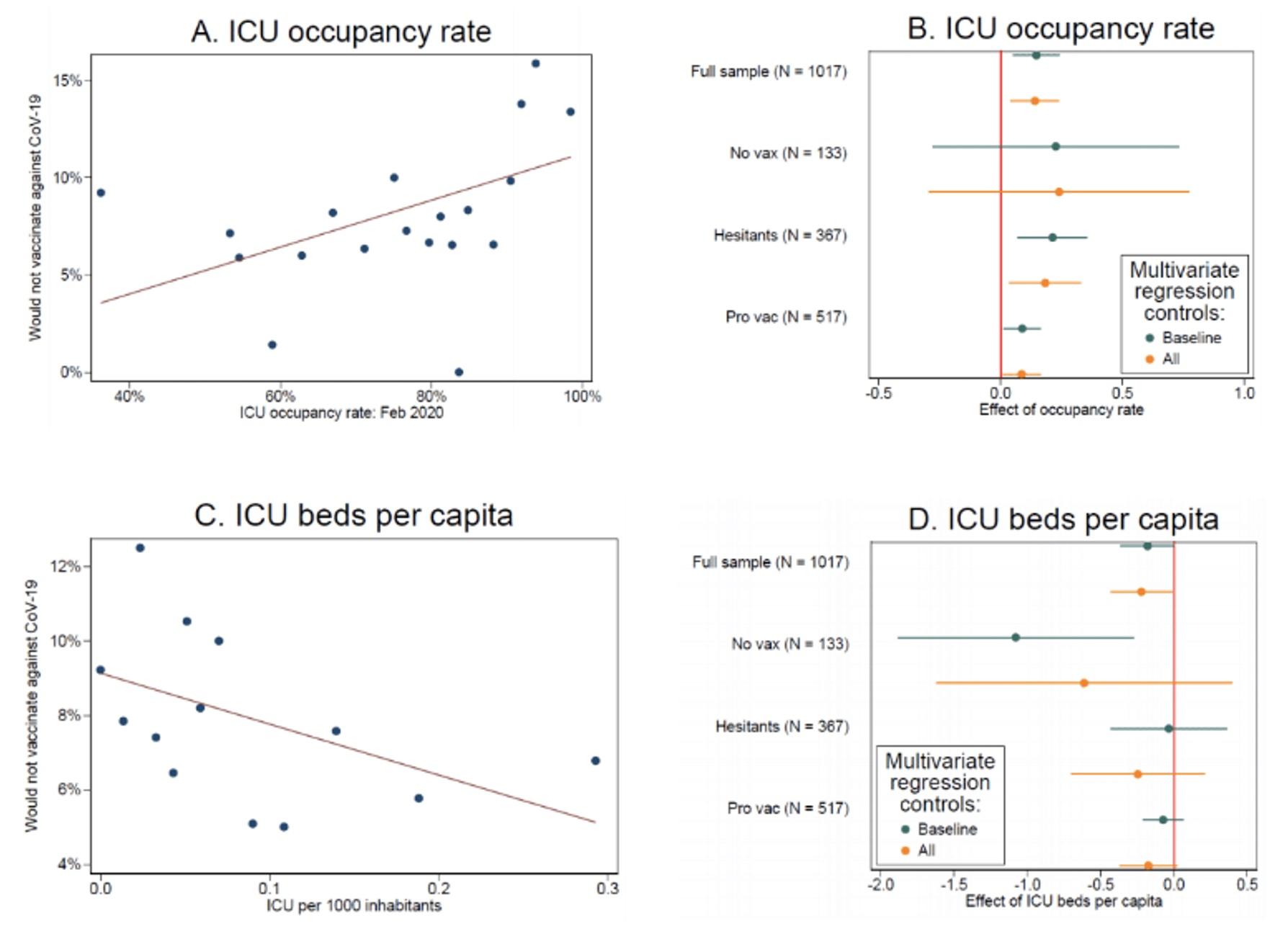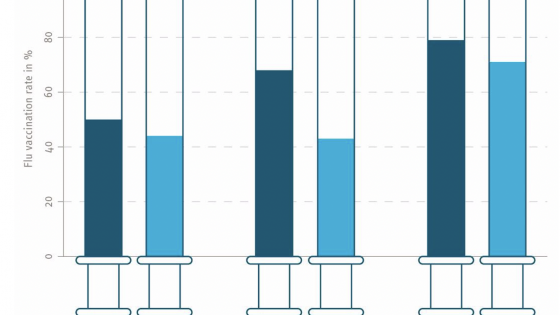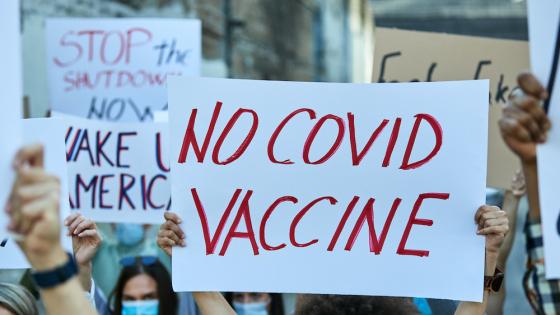Since February 2020, the COVID-19 pandemic has cost millions of lives and has affected almost every aspect of economic, social, and cultural life – from stock markets to inflation, schooling, inequality, and the gender division of labour, to name but a few (Yeyati and Filippini 2021, Burgess and Sievertsen 2020, Baldwin and Weder di Mauro 2020, Capelle-Blancard and Desroziers 2020, Sevilla and Smith 2020). Infection rates surged around the globe, and medical systems came under increasing strain.
In recent months, vaccination programmes have accelerated across the industrialised world. With supply problems increasingly solved, vaccination hesitancy is rapidly emerging as a key challenge on the path to herd immunity (Troiano and Nardi 2021, Dror et al. 2020). Given the high infectiousness of new variants, vaccine take-up amongst adults will have to reach particularly high levels for COVID-19 to be brought under control.
Our new study offers novel lessons about the drivers of vaccine hesitancy (Blanchard-Rohner et al. 2021). A previously overlooked factor can be crucial, namely, the efficiency and success of public healthcare provision during the pandemic. When the pandemic first broke out, intensive care units (ICUs) in many countries and regions were quickly overwhelmed, resulting in high mortality rates.
Using newly collected survey data from the UK, we show that success in providing emergency care during the dramatic initial phase of the pandemic is a powerful predictor of people’s readiness to receive the COVID-19 vaccine. Where the NHS was quickly overwhelmed, with overcrowded ICUs and high COVID-19 fatality rates, the willingness to become vaccinated is markedly lower.
Our findings suggest that there is an important, neglected synergy between an effective healthcare response in the early phases of a pandemic and the public’s trust and willingness to use novel treatments like the new COVID-19 vaccines.
We conducted two waves of interviews about vaccination attitudes in a nationally representative sample in the UK – in the autumn of 2019, before the pandemic; and in April 2020, during the first wave. We interviewed the same respondents, which allowed us to track changes in attitudes over time. These changes we then correlate with the quality and effectiveness of emergency care in different areas of the UK. In total, we had 1,653 respondents in the first wave, of which 1,194 participated in the second wave.
Respondents included a sizeable share of vaccine ‘hesitants’ and respondents who outright reject vaccinations – participants who in the fall of 2009 had declared that it was better for children not to receive vaccines, or that vaccines cause severe adverse effects including autism. We estimate that 12% of respondents reject vaccinations altogether and another 36% are sceptical. Only 52% of participants were strongly positive about the effects of vaccines in general prior to the pandemic.
Despite this widespread vaccination scepticism, willingness to become vaccinated against COVID-19 overall was strikingly high – some 85% of study participants said that they were definitely or probably willing to become vaccinated. Remarkably, even amongst those who reject vaccines or are hesitant, 55–81% are willing to participate in COVID-19 vaccinations (Figure 1).
Figure 1 COVID-19 vaccine acceptance and general vaccine attitudes
Source: Blanchard-Rohner et al. (2021)
Notes: The figure shows responses to the question: “If a vaccine against COVID-19 became available for everyone tomorrow, do you think you would or would not get vaccinated?” The bar on the left reports the breakdown for all respondents of the April 2020 survey (N = 1194). The other 3 columns report the breakdown for three categories of respondents: “no vax” (N = 148), “hesitants” (N = 431) and “pro vac” (N = 615). We assign respondents to one of these categories using ther answers to the question on general vaccination attitudes. See Section S.2 in the Supplementary Materials for details on the construction of these categories.
Several interpretations of this fact are possible. Vaccination sceptics may feel that most diseases against which vaccines are routinely used are not terribly harmful; faced with a potentially deadly illness, they change their mind. Alternatively, sceptics may have updated their beliefs in the face of the COVID-19 pandemic, with 24/7 media coverage of the disease, its consequences, and the need for a vaccine.
Our second main finding involves the role of public health provision. Before the arrival of vaccines, the availability of ICU capacity was a key determinant of mortality – where intensive care beds were missing, death rates spiked. We exploit the fact that various areas of England had different pre-COVID-19 levels of ICU coverage. This, in turn, meant that NHS hospitals in some areas ‘ran out of road’ much faster than others once the pandemic hit.
When we examine simple correlations, we find that low ICU capacity during the first wave of the pandemic is associated with lower vaccination willingness. This is not a result of pre-existing attitudes but a direct consequence of how vaccination hesitancy changed during the pandemic.
Panel A of Figure 2 plots vaccine hesitancy against ICU occupancy rates in February 2020, before the UK saw its first major spike in cases. The higher pre-crisis capacity usage, the greater hesitancy was by April 2020. In other words, where exogenous variation in ICU demand pre-epidemic had reduced spare capacity in ICU units, the pandemic struck harder.
Figure 2 ICU availability, perceived risk and unwillingness to get vaccinated against COVID-19
Source: Blanchard-Rohner et al. (2021)
This failure to provide effective support was not a result of structural under-provision in certain areas. No such pattern is visible if we use, say, ICU occupancy half a year earlier (October 2019), strengthening the case for a causal interpretation of our finding. Figure 3 gives an impression of the variation in ICU occupancy across Britain on the eve of the pandemic’s first wave, in February 2020.
Panel B of Figure 2 shows the same exercise for different groups, and after controlling for observables. We find positive effects throughout. The analogous pattern is visible if we use the number of ICU beds per 1,000 inhabitants as an indicator of public health resources.
Figure 3 Variation in ICU occupation across Britain in February 2020
Source: Using data from Blanchard-Rohner et al. (2021).
Policy implications
At first pass, many observers could think that public health resources like ICU capacity and vaccination campaigns are substitutes – countries with high capacity to deal with severe cases might be able to cope with lower rates of vaccination take-up. However, our results point to a surprising synergy: where the emergency care systems of public healthcare providers were less strained during the early days of the COVID-19 epidemic, vaccination hesitancy is systematically less today.
While generally high rates of support for vaccination make it more likely that herd immunity can be reached, our findings suggest that generous provision of spare emergency capacity can generate additional benefits, in the form of the public’s greater willingness to become vaccinated.
References
Baldwin, R, and B Weder Di Mauro (2020), Economics in the time of COVID-19, London: CEPR.
Blanchard-Rohner, G, B Caprettini, D Rohner and H-J Voth (2021), “Impact of COVID-19 and ICU capacity on vaccination support: Evidence from a two-leg representative survey in the UK”, Journal of Virus Eradication, 100044.
Burgess, S, and H H Sievertsen (2020), “Schools, skills, and learning: The impact of COVID-19 on education”, VoxEU.org, 1 April.
Capelle-Blancard, G, and A Desroziers (2020), “The stock market and the economy: Insights from the COVID-19 crisis”, VoxEU.org, 19 June.
Dror, A A, N Eisenbach, S Taiber, N G Morozov, M Mizrachi, A Zigron, S Srouji and E Sela (2020), “Vaccine hesitancy: the next challenge in the fight against COVID-19”, European Journal of Epidemiology 35: 775–9.
Sevilla, A, and S Smith (2020), “Baby steps: The gender division of childcare during the COVID-19 pandemic”, Oxford Review of Economic Policy 36: S169–S186.
Troiano, G, and A Nardi (2021), “Vaccine hesitancy in the era of COVID-19”, Public Health.
Yeyati, E L, and F Filippini (2021), “Pandemic divergence: The social and economic costs of Covid-19”, VoxEU.org, 12 May.










